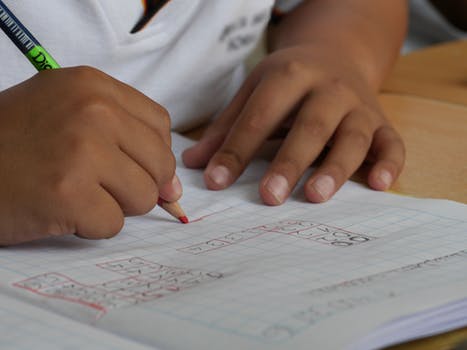Are you looking for hacks to help students improve their handwriting? If so, keep reading.
1. Utilize adhesive content (e.g., tape, rubber cement, etc.) to keep paper positioned properly for handwriting.
2. Utilize a pencil grip (e.g., three-sided foam rubber, etc.) to give the student assistance in appropriate positioning of the pencil or pen.
3. Utilize handwriting models with arrows that indicate the direction in which the student should correctly form the letters.
4. Give older students with functional handwriting chances (e.g., job application forms, reinforcer surveys, order forms, checks to write, etc.).
5. Make sure that all educators who work with the student keep consistent expectations of handwriting quality.
6. Make sure the student has a number line and alphabet strip on their desk to use as a reference for the correct formation of letters and numbers to reduce errors.
7. Make sure the student knows that work not done neatly must be redone.
8. Give the student shorter tasks, but more of them throughout the day (e.g., four tasks of five problems each rather than one task of 20 problems).
9. Minimize the emphasis on competition. Competitive learning activities may cause the student to rush and perform work in a careless manner.
10. Tasks not finished according to teacher instructions and expectations must be finished during leisure or break time.
11. Get the student to record the number of times their handwriting is acceptable during a given week.
12. Utilize a pencil grip or various-sized pencil to assist the student with fine motor skills to produce acceptable handwriting.
13. Inspect the student’s grip on the pencil to make sure that they are holding the pencil correctly.
14. Designate a peer to model acceptable work for the student to mimic.
15. Assess the appropriateness of the task to ascertain (a) if the task is too easy, (b) if the task is too complicated, and (c) if the duration of time scheduled to finish the task is sufficient.
16. Connect with the parents to disseminate information about the student’s progress. The parents may reinforce the student at home for improving the quality of their handwriting at school.
17. Draft an agreement with the student stipulating what behavior is required (e.g., improving the quality of their handwriting) and which reinforcement will be implemented when the agreement has been met.
18. Praise the student for improving the quality of handwriting based on capacity and ability. As the student shows success, slowly increase the amount of improvement expected for reinforcement.
19. Praise those students in the classroom who turn in tasks that are legible.
20. Create classroom rules: • Complete every assignment. • Complete assignments quietly. • Remain in your seat. • Finish tasks. • Meet task expectations. Examine rules often. Praise students for following the rules.
21. Talk with the student to explain: (a) what the student is doing wrong (e.g., turning in work that has spelling errors or spacing errors, work that is illegible, etc.) and (b) what they must be doing (e.g., taking time to check for spelling, spacing errors, etc.).
22. Praise efforts to improve handwriting (e.g., double-checking spelling, proper positioning of letters, correct spacing, etc.): (a) give the student a concrete reward (e.g., privileges such as leading the line, handing out learning materials, 10 minutes of free time, etc.) or (b) give the student an informal reward (e.g., praise, handshake, smile, etc.).
23. Consider using one of the apps on one of our best writing apps lists:
The Tech Edvocate’s List of 31 Grammar & Writing Apps, Tools & Resources
Ten Apps to Help Learners Develop Writing Skills
10 of the Best Grammar and Writing Apps for Elementary School Learners
11 of the Best Grammar and Writing Apps for High School Learners
10 of the Best Grammar and Writing Apps for Middle School Learners





